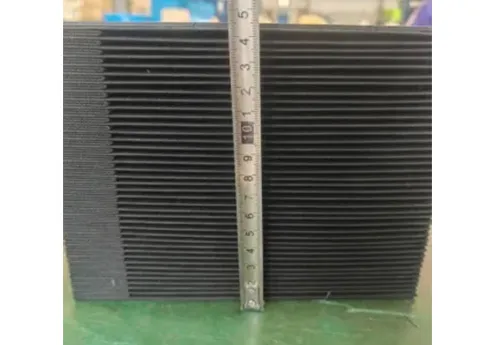Exploring the Benefits and Applications of Synchronous Round Belts in Modern Machinery
Understanding Synchronous Round Belts A Comprehensive Overview
Synchronous round belts play a crucial role in numerous industrial applications, serving as an essential component in the movement and transmission of power across various mechanical systems. These belts have gained popularity due to their unique design and the advantages they offer in terms of efficiency, reliability, and performance.
What Are Synchronous Round Belts?
Synchronous round belts, also known as timing belts, are designed with a specific tooth or rib pattern that engages with corresponding grooves on pulleys. Unlike traditional v-belts, which rely on friction to transmit power, synchronous belts maintain perfect timing between the driven and driving pulleys, ensuring that there is no slippage. This characteristic is particularly important in applications where precise positioning is crucial.
The round shape of these belts allows for flexible installation and usage. They are primarily made from high-quality rubber or thermoplastic materials, reinforced with fibers to enhance strength and durability. This construction makes them resistant to wear and tear, as well as to oils and other chemicals, thereby extending their lifespan in demanding environments.
Advantages of Synchronous Round Belts
1. Precision Timing One of the most significant advantages of synchronous round belts is their ability to provide accurate timing in motion systems. This precision is essential in applications like robotics, CNC machines, and conveyor systems, where synchronization between components is key to ensuring product quality and operational efficiency.
2. Reduced Slippage Unlike traditional belts, synchronous belts are less prone to slippage. This quality allows for the transmission of higher torque without losing performance. As a result, machinery can operate at higher speeds and with greater power efficiency.
synchronous round belt

3. Low Maintenance Synchronous round belts typically require less maintenance compared to v-belts. Their design reduces the chances of wear and elongation, translating into fewer replacements and lower operational costs over time.
4. Versatile Applications These belts are used in a wide range of applications across various industries, including automotive, manufacturing, and packaging. Their versatility allows manufacturers to optimize their machines for better performance without the need for complex gear systems.
5. Noise Reduction The engineering of synchronous belts contributes to quieter operation. The reduced vibration and noise levels when compared to chains or v-belts make them ideal for applications where silent operation is essential, such as in office machinery or consumer goods.
Applications of Synchronous Round Belts
Synchronous round belts are prevalent in many sectors due to their unique properties. In the automotive industry, they are utilized in timing systems to synchronize engine components, ensuring optimal performance. In manufacturing, these belts are key in conveyor systems that require precise movement and timing, moving products smoothly from one phase of production to another.
Moreover, the robotics sector benefits significantly from synchronous round belts, as they provide accurate position control necessary for robotic arms and automated guided vehicles (AGVs). The food industry also employs these belts, particularly in applications requiring hygienic and efficient movement of products through machinery.
Conclusion
Synchronous round belts are vital components that contribute significantly to the efficiency and effectiveness of modern machinery. Their ability to provide precise timing, reduced maintenance, and versatility across various applications makes them a preferred choice over traditional belt systems. As industries continue to evolve and innovate, synchronous round belts will undoubtedly play an integral role in shaping the future of mechanical engineering and automation. The ongoing advancements in material science and manufacturing techniques promise even greater enhancements in the performance and reliability of these crucial components.








